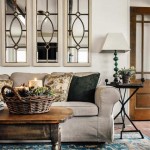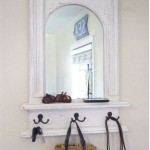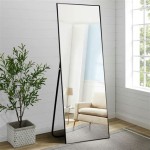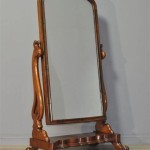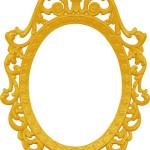How To Make A Wall Mirror
Creating a custom wall mirror offers a unique opportunity to personalize a space. Whether aiming for a specific aesthetic or simply enjoying DIY projects, this guide provides a comprehensive overview of the process.
The initial step involves gathering the necessary materials. This includes a mirror, which can be purchased from glass suppliers or repurposed from existing items. The size and shape of the mirror dictate the overall project dimensions. Other essential materials include a strong adhesive appropriate for glass, safety gloves and eyewear, a measuring tape, a pencil or marker, and a level. Depending on the desired frame design, additional materials like wood, metal, or plastic may be needed.
Preparing the mirror and the chosen frame materials is crucial. Carefully clean the mirror surface with a glass cleaner to ensure proper adhesion. If using wood for a frame, it should be cut to the desired dimensions and sanded smooth. Metal frames might require cutting and filing to ensure accurate fit and a smooth finish. Plastic frames can be cut with appropriate tools and sanded if necessary.
The frame selection process significantly influences the final appearance of the mirror. A simple wooden frame provides a classic look, achievable by cutting four pieces of wood to create a rectangular or square frame. These pieces are then assembled around the mirror's edges. For a more ornate appearance, decorative molding can be added to the frame. Metal frames offer a modern and sleek aesthetic. Metal strips can be cut and bent to form a frame, then welded or adhered together. Plastic frames provide a lightweight and versatile option, readily available in various colors and styles, allowing for adaptability to different design schemes.
Attaching the frame to the mirror requires precision and care. Lay the mirror face down on a protected surface. Apply a thin, even layer of mirror adhesive to the back edges of the frame. Carefully position the frame onto the mirror, ensuring proper alignment. Apply even pressure to the frame to secure the bond. Allow the adhesive to cure completely according to the manufacturer's instructions.
Hanging the mirror securely is paramount for safety. Choose appropriate hanging hardware based on the weight and size of the mirror. D-rings and wire are a common choice for heavier mirrors, while smaller, lighter mirrors may utilize adhesive hooks or sawtooth hangers. Prior to hanging, locate wall studs using a stud finder. For heavier mirrors, it's advisable to anchor the hanging hardware directly into the studs for maximum support. Mark the desired hanging position on the wall using a level to ensure the mirror hangs straight. Install the chosen hanging hardware according to the manufacturer’s instructions.
Several alternative framing techniques can be employed to achieve different aesthetic outcomes. A frameless mirror can be created by simply attaching hanging hardware directly to the back of the mirror. This minimalist approach is suitable for contemporary interiors. For a rustic look, reclaimed wood can be used to create a unique frame. Different staining and finishing techniques can further enhance the rustic aesthetic. Mosaic tiles can be adhered to the frame for a vibrant, artistic flair. The choice of tile color and pattern allows for extensive customization.
Safety precautions are of utmost importance throughout the entire process. Always wear safety gloves and eyewear when handling glass and adhesives. Work in a well-ventilated area to avoid inhaling fumes from adhesives or other materials. Ensure the mirror is securely attached to the wall to prevent accidents. When using power tools for frame construction, follow all safety guidelines provided by the manufacturer.
Maintaining the newly created wall mirror involves regular cleaning. Gently wipe the mirror surface with a glass cleaner and a soft cloth. Avoid using abrasive cleaners, which can scratch the mirror surface. Dust the frame regularly to prevent buildup. Periodically inspect the hanging hardware to ensure it remains secure. If using a wooden frame, reapply a protective finish as needed to maintain its appearance and protect the wood.
Troubleshooting potential issues can save time and frustration. If the adhesive fails to bond properly, ensure the mirror and frame surfaces are clean and dry. Consider using a stronger adhesive if necessary. If the mirror hangs unevenly, check the hanging hardware and wall anchors to ensure they are securely installed and level. If the frame becomes damaged, repair or replace it promptly to maintain the mirror's structural integrity and aesthetic appeal.
Exploring different design ideas and experimenting with various materials can lead to a truly personalized and unique wall mirror. Adapting these techniques to different interior design styles and utilizing readily available resources allows for a wide range of creative expression.

How To Make A Mirror Wall Step By Guide

How To Make A Mirror Wall Step By Guide

It S A Mirror Acle 5 Ways To Make Reflecting Walls Work

Diy Large Paneled Wall Mirror Shanty 2 Chic

Diy A Mirrored Wall Using Square Plates Home Studio Mirror

How To Make A Large Arched Mirror Jenna Sue Design

Diy Wall Mirrors Thirty Best Home Decor Projects

How To Make An Accent Wall Mirror Easy Tutorial Thistlewood Farm

How To Make A Mirror Color Blocked Diy

Diy Sunburst Mirror 4 Wall Art

